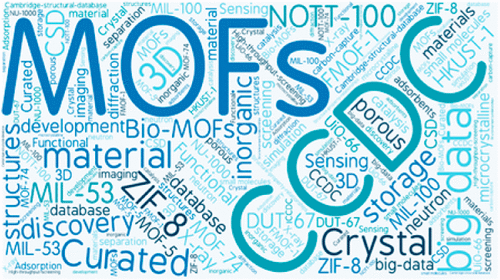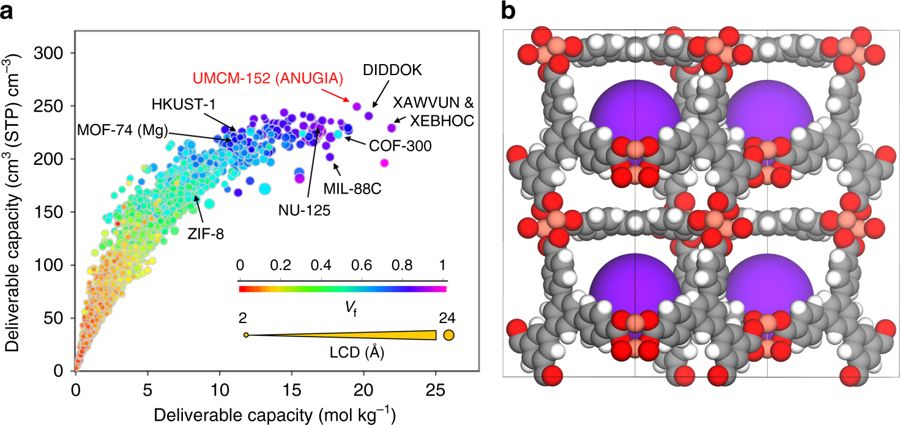One key feature of MOFs is the building-block approach to their synthesis, which opens up the possibility to synthesise an
endless number of structures. In order to use HTS methods, my team was able to develop the first curated database of MOFs,
with +90,000 structures published so far (Chem. Mat. 2017). This huge number creates exciting opportunities, but it also
creates critical challenges to find optimal structures. We have shown how HTS can guide synthetic efforts towards promising
materials, and dramatically accelerate materials discovery (JPC 2013). In the process of building machine learning capabilities,
we have moved from HTS to the development of data mining tools by introducing an interactive visualisation concept to analyse
over 1000 unique structure-property representations in 5D (Nat. Commun. 2018). Then, we have developed artificial neural
networks for reproducing MOF properties in a matter of seconds without the need for complex and time-consuming calculations
or experiments, guiding researchers to assess and design new structures with improved performance (Matter 2019).
In addition to HTS, we also use molecular simulation in order to provide a link between adsorption phenomena at the molecular
level and macroscopic measures of adsorption performance. The use of GCMC and MD simulations provide a detailed picture of the
adsorption that is not easily accessible from experimental methods, helping to understand and improve the adsorption mechanism
of specific materials.

